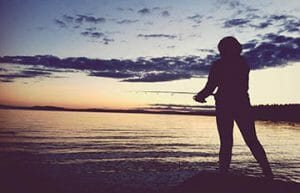Ecosystems around th e United States have all sorts of pressure placed on them, leading to state governments like Texas raising $675,000 from conservation vehicle plates, the funds of which go directly to fishing authorities in the state. As a result, inland fisheries such as Lake Falcon’s largemouth reserves are able to find improvements in water quality, nutrient levels and protection from natural erosion and hydrocarbon pollution. All of this is great news for anglers and fish alike.
e United States have all sorts of pressure placed on them, leading to state governments like Texas raising $675,000 from conservation vehicle plates, the funds of which go directly to fishing authorities in the state. As a result, inland fisheries such as Lake Falcon’s largemouth reserves are able to find improvements in water quality, nutrient levels and protection from natural erosion and hydrocarbon pollution. All of this is great news for anglers and fish alike.
What can be done to help, though? What pieces of cutting edge angling technology are we using that’ll have a great impact on the hobby? For many, the new gadgets and trends out on the market will help to keep the industry thriving for decades to come.
Crafty drilling technology for every season
The idyllic image of a fishing trip often encompasses a warm, lazy afternoon, a crate of beer and a boat in a lake. Whilst this is possible, experienced fishers enjoy – even relish – the challenge of putting their equipment and skills to test in a wide range of outdoors systems. One such is winter ice fishing. Fish continue to thrive in the relatively warmer water underneath thick ice, and with careful precision, bass anglers are putting holes into ice in the likes of Michigan. However, haphazard drilling of holes into ice over huge swathes of lakes and rivers can affect the ecosystem and the sustainability of the area. Technology has stepped in here, with USA Today reporting on a crafty fishing smartphone app that helps to turn ice fishing into a precision art, by dictating the location, depth and angle of new holes.
The greater effect of fishing apps
Other fishing apps like iFish have come to prominence at the same rate the smartphone has. Providing intuitive maps that can outline fish populations and undulations provides a great tool for anglers to find good spots and, hopefully, prevent overfishing. It goes further. A study by American Progress found that fishing apps are assisting fishery populations and giving rise to a fishing lobby aiming to preserve wetland populations. The same study found this has had a positive knock-on effect on local ecosystems. This is great news; whilst you might only be interested in picking up bass, it goes without saying that the delicate food chains and ecosystems are equally important. Bass can only exist due to a balanced ecosystem with every member of the food chain  operating as it should be, after all.
operating as it should be, after all.
Encouraging sustainable fishing also enables the basic stocks of the fish to exist in a natural state. Rather than fluctuating between huge overfishing and avoidance of the area, the impact of angling on natural levels is kept to a good level.
Angling and fishing are past times intrinsically linked with the environment. Bass species of all types remain of ‘least concern’ in terms of endangerment, but that’s for the good work of anglers and state authorities everywhere. Technology is lending a hand now, making it easier to get out and angle for bass whilst having positive knock on sustainability.

